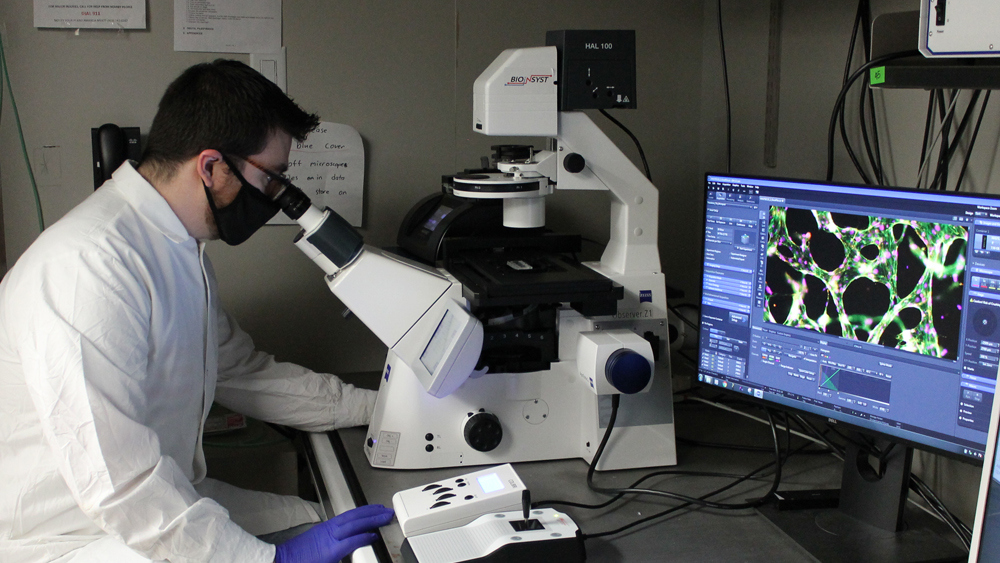
Jim Tronolone, a second-year doctoral student in the Department of Biomedical Engineering, develops USB-sized devices that can help test drugs outside of the body. Despite the COVID-19 pandemic complications, Tronolone made the most of the situation by reassessing his work and publishing a review paper.
Tronolone works in Dr. Abhishek Jain’s lab at Texas A&M University. He focuses on developing methods to advance lab-on-a-chip research, where human cells can be grown into microfluidic devices that mimic how various organs, veins and systems operate in the body. Tronolone works to add vascularization to these devices, allowing researchers to view better how blood vessels, tissues and drugs interact.
Tronolone recently had a review paper published in the journal Advanced Functional Materials that reviewed different combinations of elements in a microfluidic device – growth factors, cell types/lines, biomaterials and physical forcesor other biomaterials.
“I’m trying to find an optimal combination, the things that gave the highest score, and seeing if that can translate to tissue-specific microfluidic models,” Tronolone said.
These models with a vascularized element could impact how researchers understand drug interaction and toxicity in human subjects. Tronolone said many drugs travel through your bloodstream until they reach their target, where they then have to cross the vascular network into the target tissue.
“So you would have to see first that it can cross the endothelial barrier,” he said. “You have to test that it’s not harming the vascular network because if you injure the network, it releases its own distress signals, and that can, in turn, injure other cells and tissues.”

Tronolone’s end goal for his doctoral work is to develop a vascularized microfluidic device to monitor pancreatic islets and how they release insulin in response to high glucose levels. Using a vascularized device could advance the understanding of how to treat Type 1 diabetes, where islets die at the onset of the disease due to an autoimmune response.
Before the COVID-19 pandemic, Tronolone said he struggled to form the microvascular network when co-culturing islets in the devices. When the lab lockdown started, he had to stop lots of his culture work, which then took time to restart once he could reenter the lab. However, Tronolone said it wasn’t all bad news.
“It’s what allowed me to do this review paper and really look at the literature to see what I need to focus on to get the vascularized networks to form when working with more complex microfluidic models,” he said.
By reviewing the literature, Tronolone said he could find what components that formed vascularization were critical and develop a plan to test amounts of each element to achieve a repeatable network formation.
“To start translating vascularization to tissue-specific models, you need to start getting more complex,” he said. “I feel that my work fits into that because if I were to sit down and focus on what components of my own device can form the vascular network, maybe people can use that in their own tissue-specific microfluidic models.”
Tronolone receives funding from the National Excellence Fellow position in the Department of Biomedical Engineering and the Graduate Research Fellowship Program from the National Science Foundation.
His advice for other students who also find themselves struggling in their work: Don’t be afraid to take a step back when things aren’t working.
“Look at the literature and see if you can deduce any information that’s similar between all these reports that somehow you can apply to your own research,” Tronolone said.